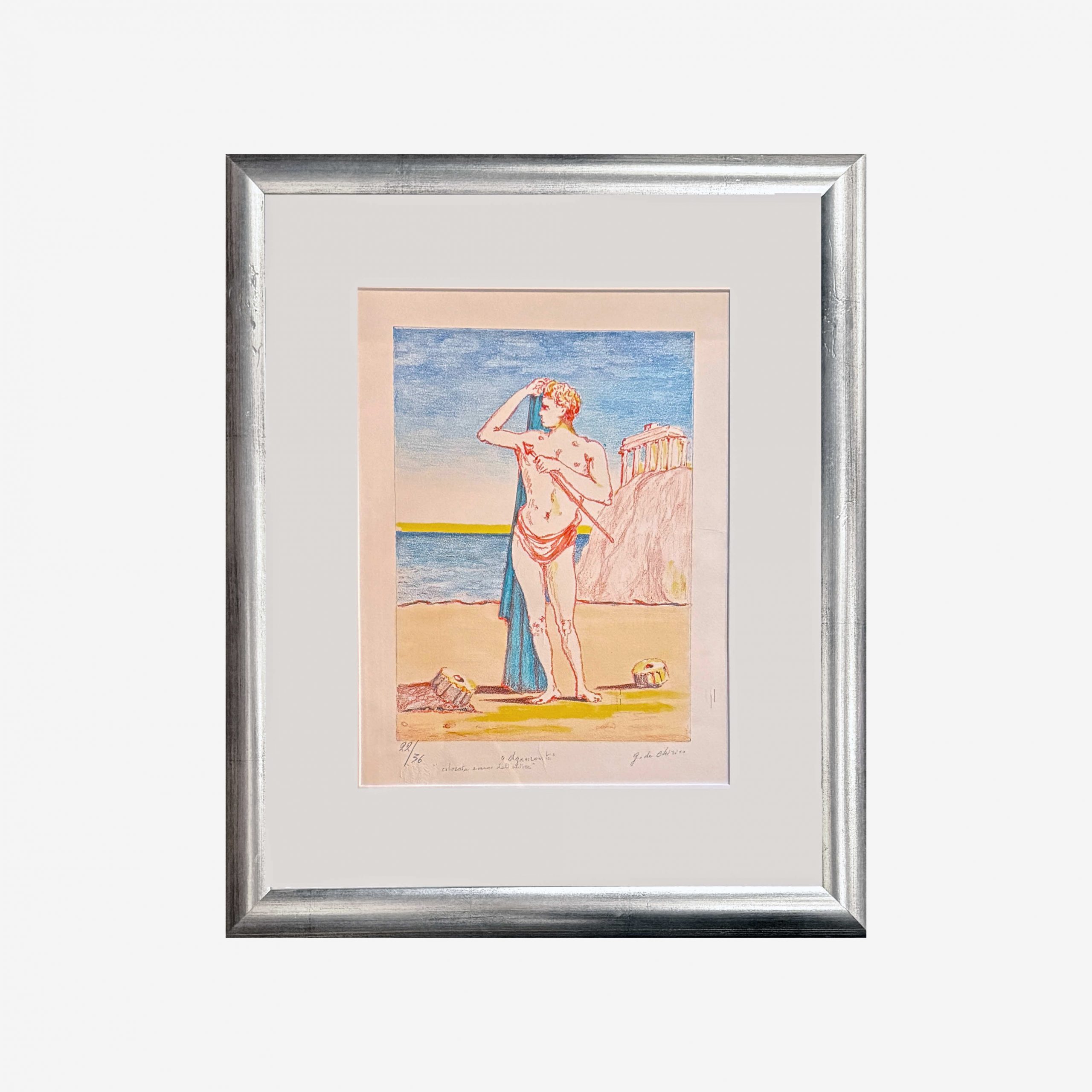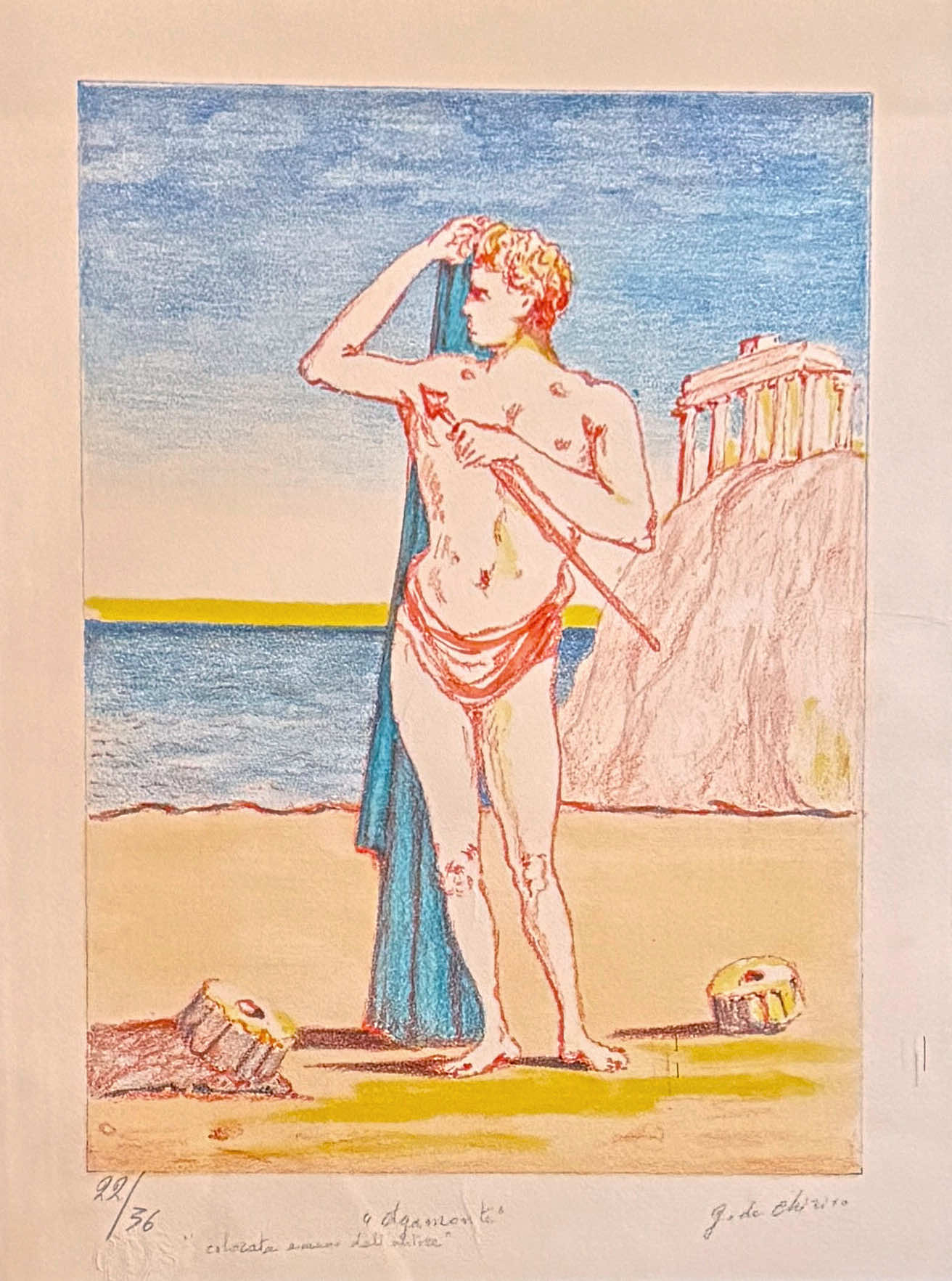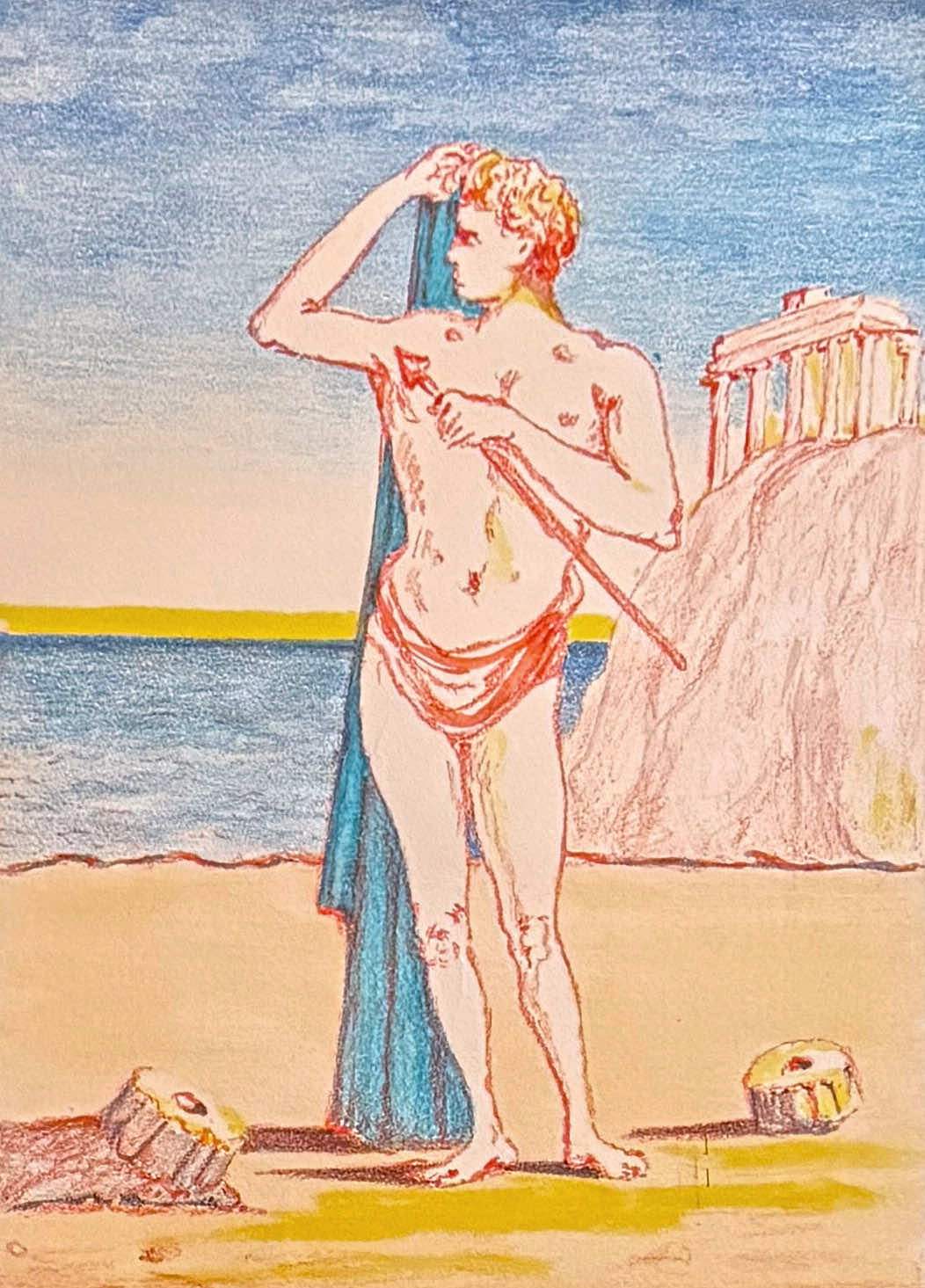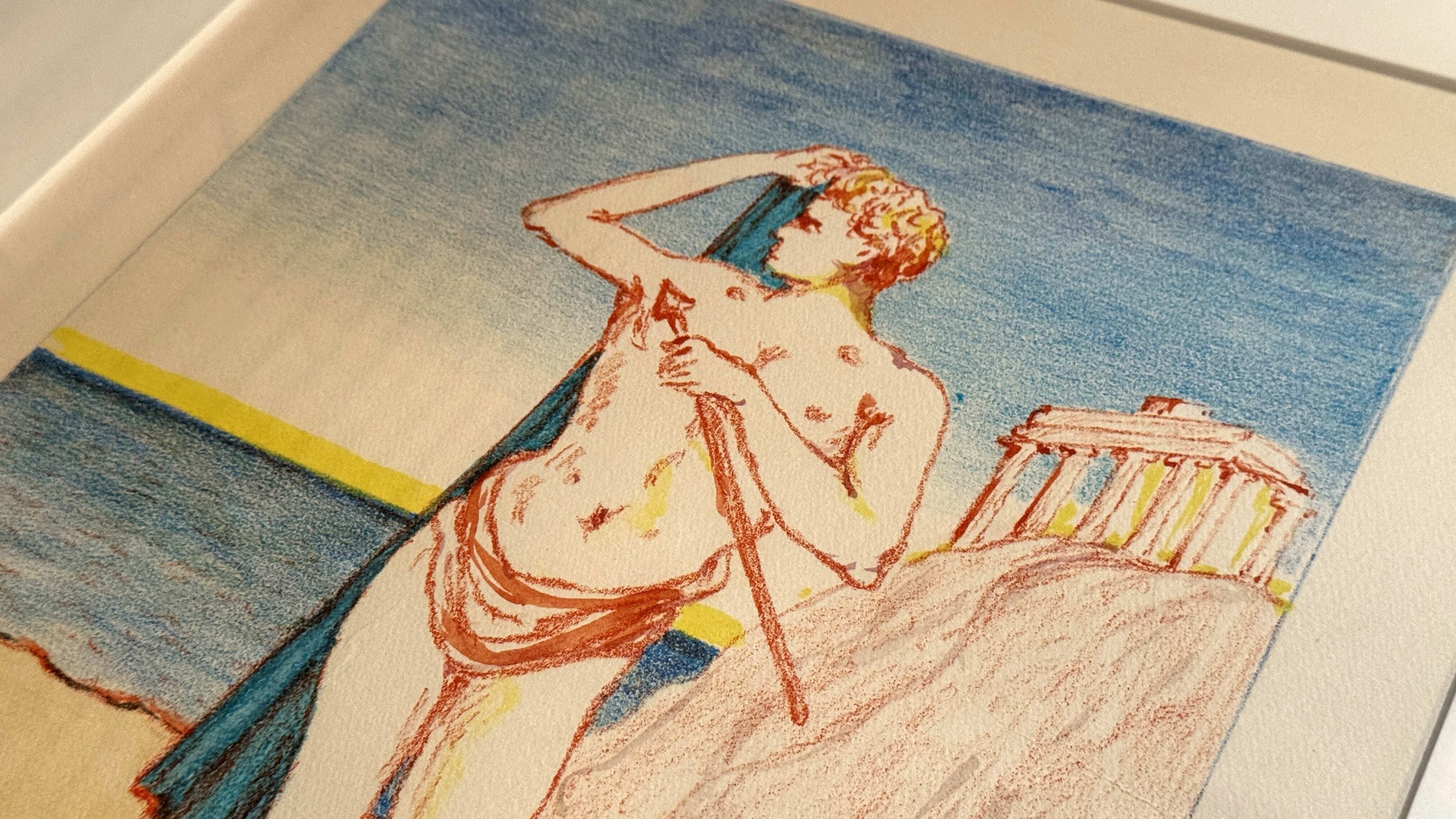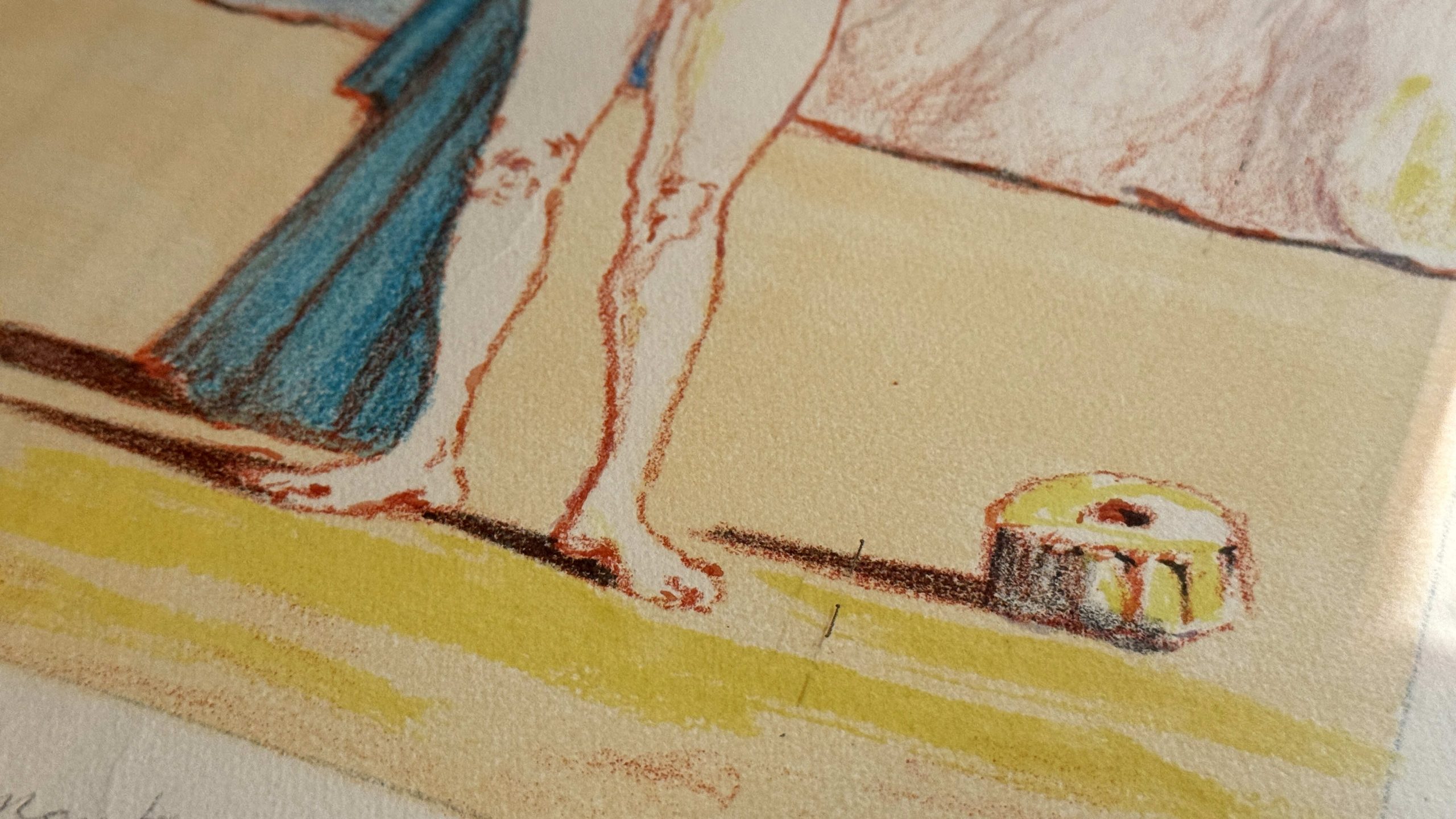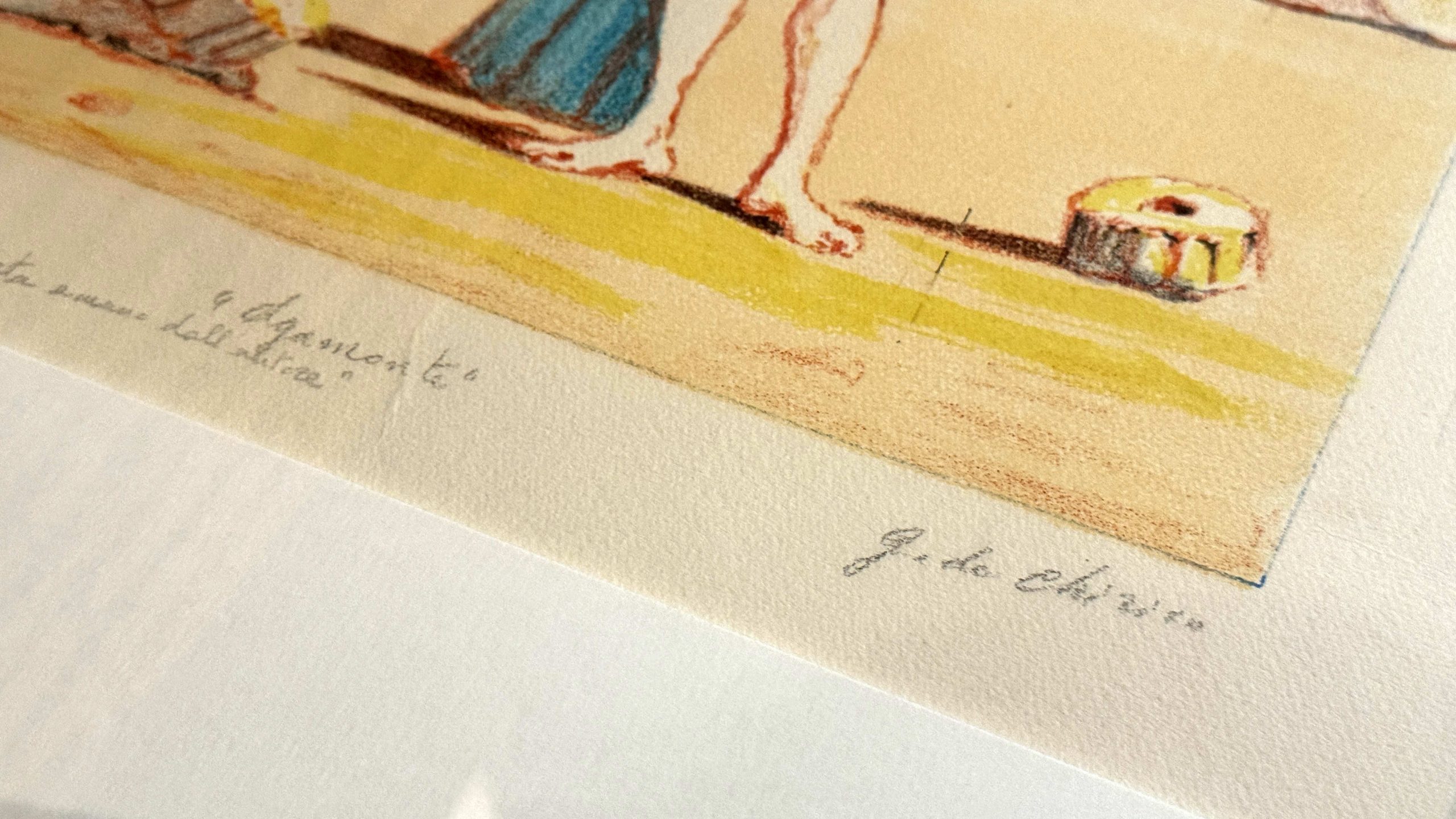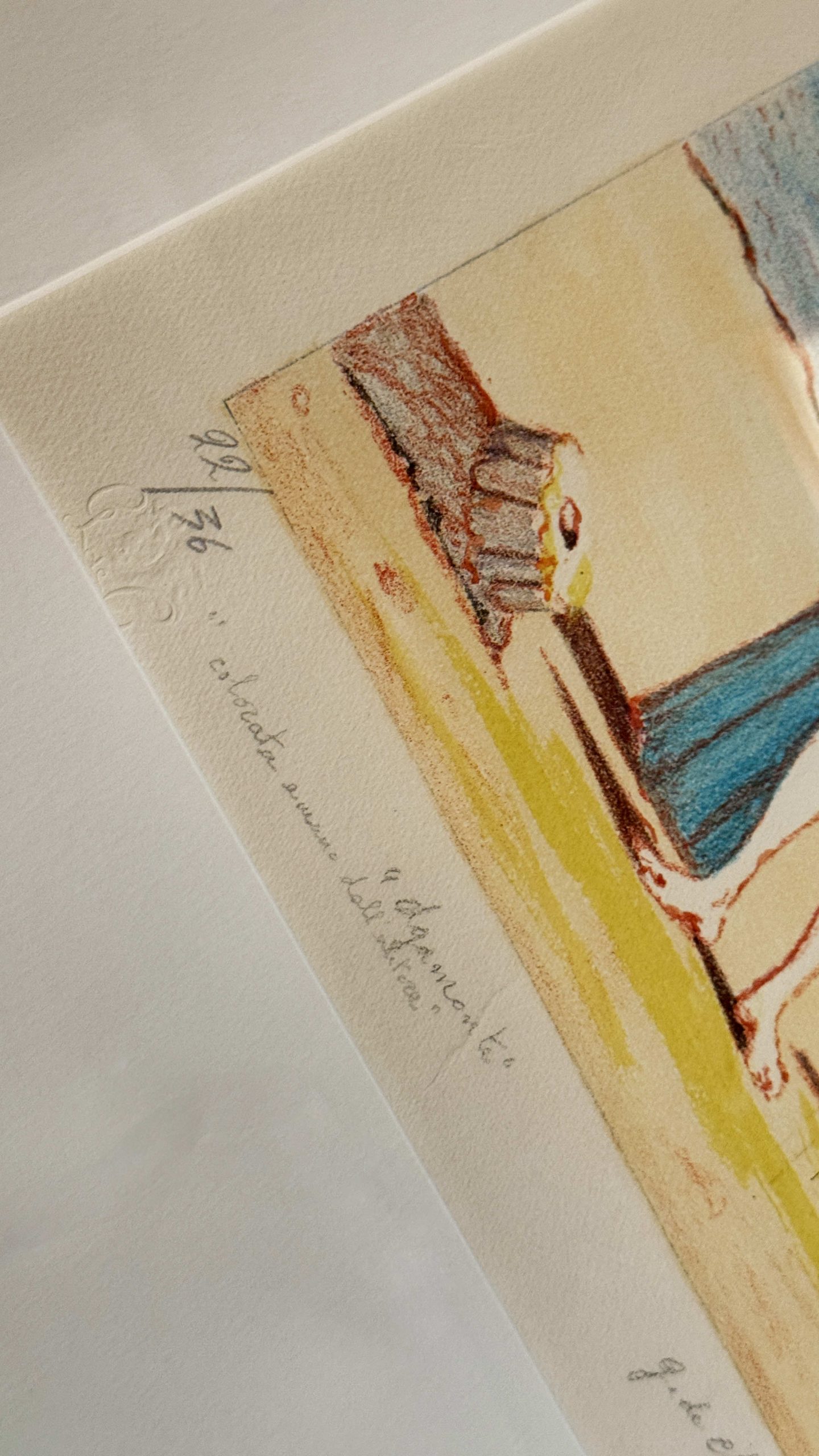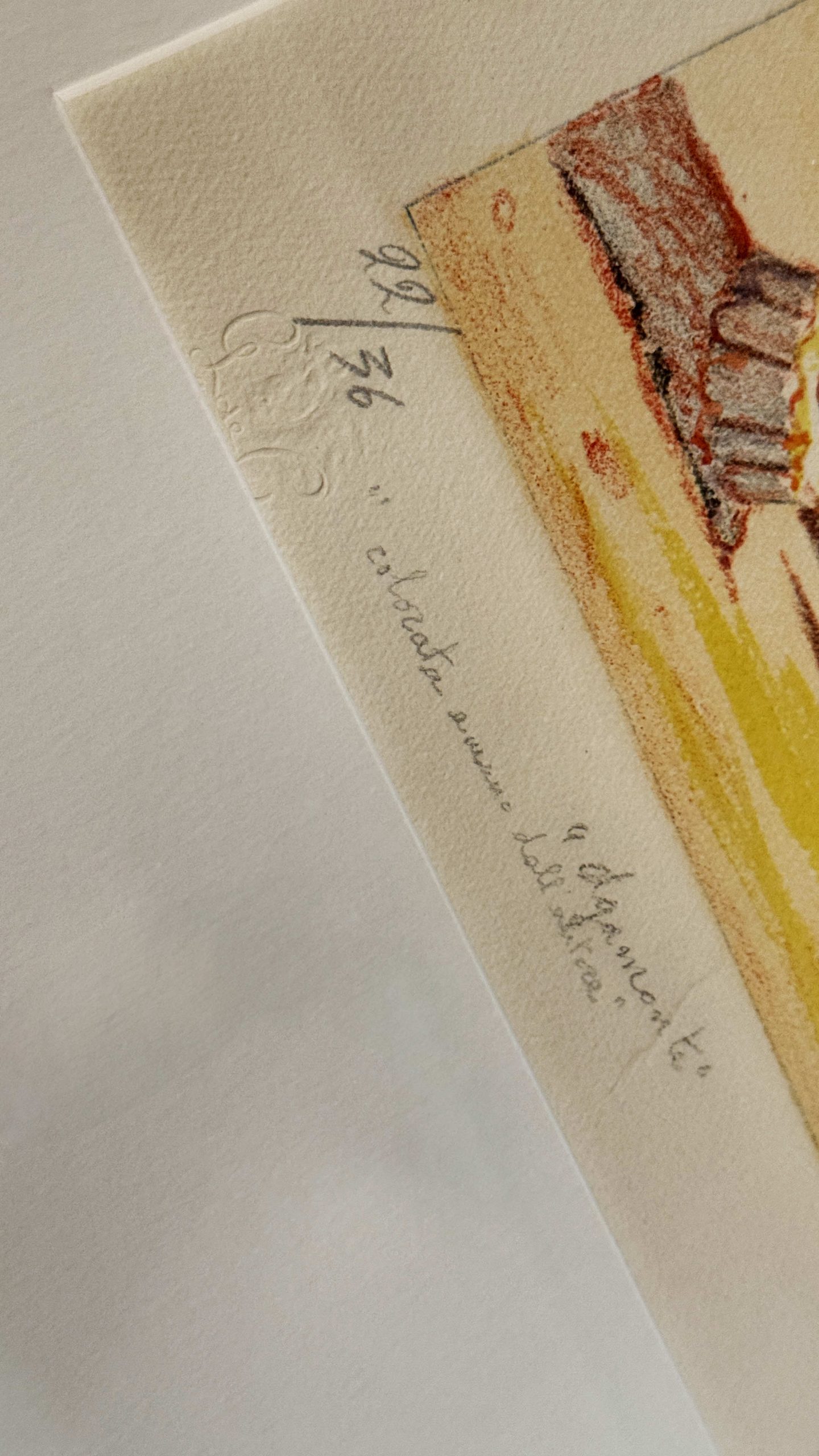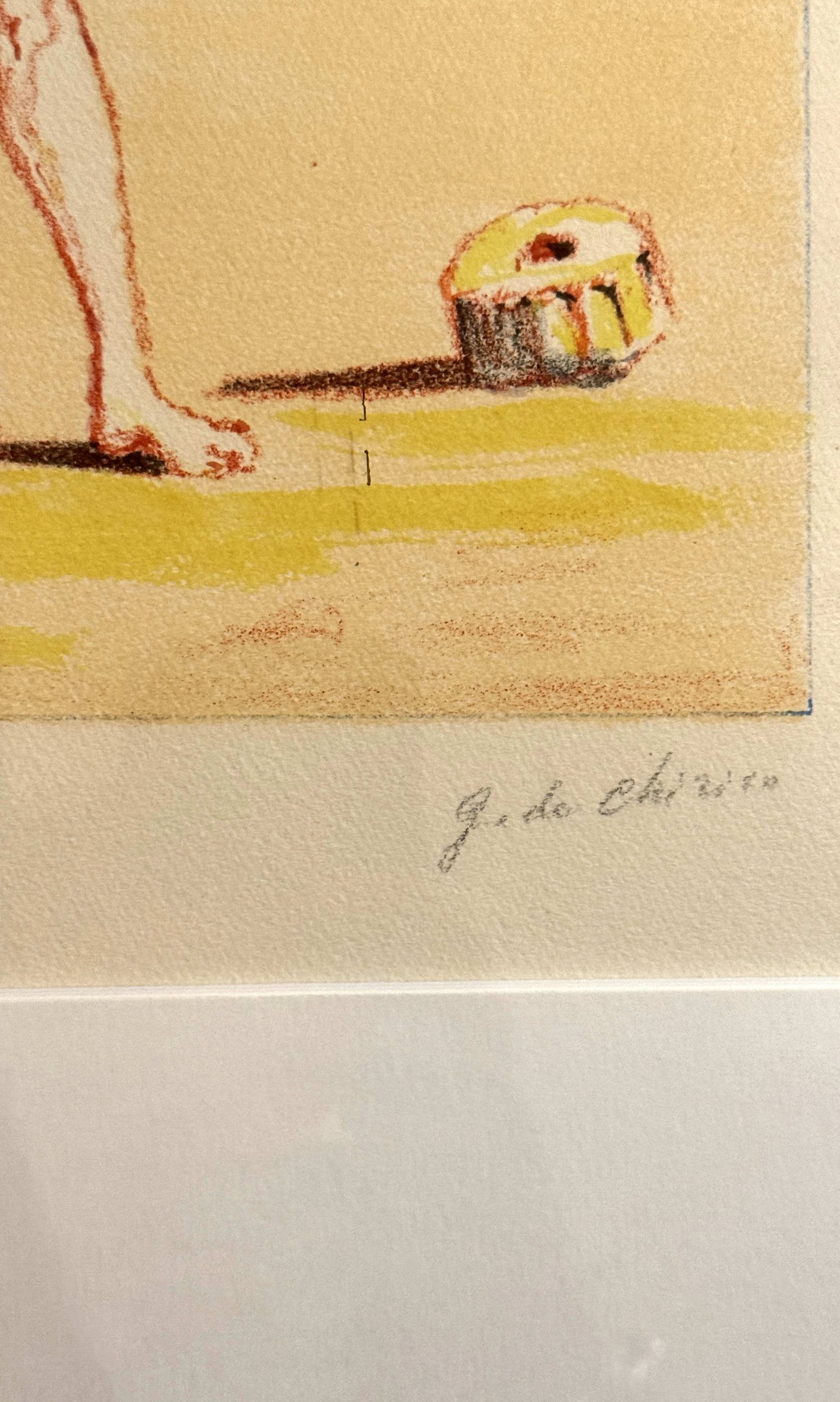Agamonte by Giorgio de Chirico
Agamonte is a color lithograph on paper from the 1950s by Giorgio de Chirico. A nude male figure stands before the sea. A blue cloak falls from his shoulder. He grips a staff or spear in his right hand. He looks toward the horizon in quiet reflection. At his feet lie two broken columns that recall ancient ruins. On a distant hill, a temple rises, likely evoking the Acropolis and the Parthenon.
Title and Iconography
The title Agamonte carries a Hellenistic tone and reflects de Chirico’s lasting fascination with antiquity. The work belongs to his Neoclassical period, after his celebrated Metaphysical years. The figure echoes Greek ideals of masculine beauty, with hints of Apollo and athletic marbles. De Chirico uses a freer line and delicate color, which add lightness to the monumental pose.
Edition and Technical Details
The print is numbered 22/36, a very limited edition that signals rarity. Loose red strokes and calm blues, yellows, and greens suggest a spontaneous hand. Even so, the poised composition roots the image in academic tradition and a timeless view of antiquity. The paper bears the autograph “G. de Chirico” and a handwritten note that records the title and likely states “colocata… dall’artista,” pointing to the artist’s direct role in the edition. The frame measures 65 × 53.5 cm, and the plate imprint measures 33.5 × 24.5 cm. Condition is excellent.
Artistic Context
Giorgio de Chirico (1888–1978) stands as the father of Metaphysical painting. He influenced Dalí, Magritte, and Max Ernst. In his mature years, he often returned to classical themes with a calmer, more contemplative tone. He still kept the quiet enigma that marks his art. Related lithographs present youthful heroes, ruins, and marine horizons, as in works linked to Ebdòmero and to graphic versions of Le Muse Inquietanti.
Significance
Agamonte joins nostalgia for the ancient world, the heroic ideal, and the Mediterranean shore. The result shows de Chirico’s personal reading of classicism in the mid-twentieth century. It blends lyrical color with enduring form and invites slow, thoughtful looking.
